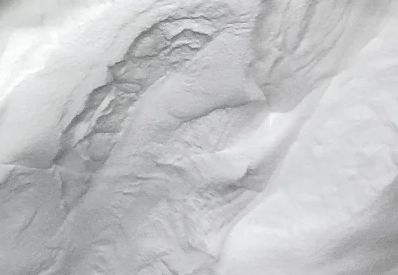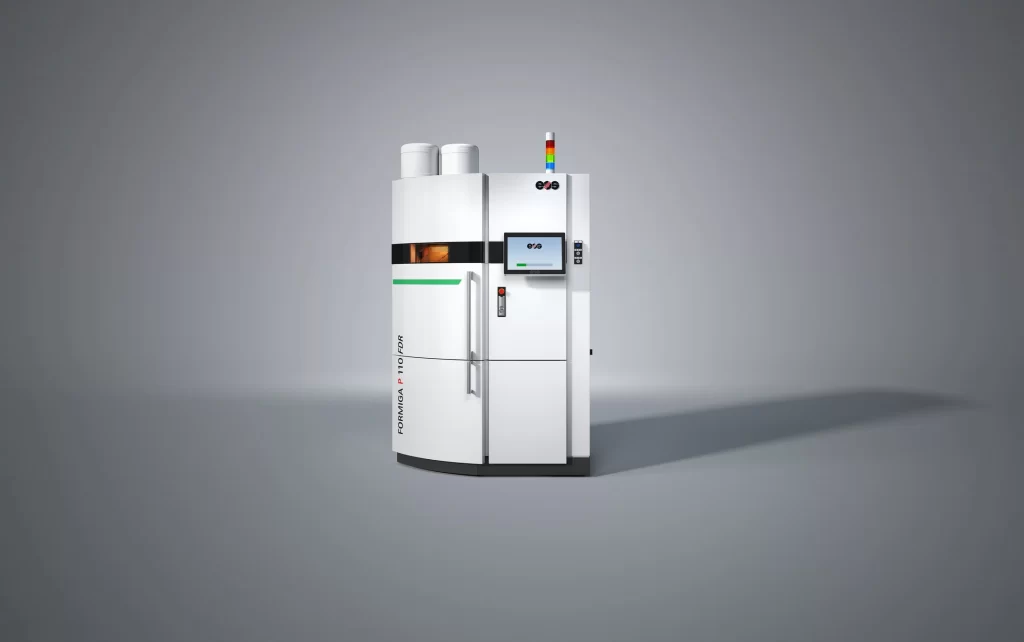The 3D Printing Industry Awards 2022 shortlists are now available for voting. Who will win the 2022 3DPI Awards? Have your say by casting your vote now.
Industrial manufacturing firm Siemens and powder bed fusion (PBF) 3D printer developer EOS have both debuted sustainable new 3D printing applications, Siemens, and powders, EOS, at the Formnext trade show.
While Siemens has demonstrated how 3D printing’s inherent design freedoms can help reduce the footprint of automotive grippers, EOS has introduced two eco-friendly materials. Traditionally petrol-based, the firm’s carbon-reduced PA 2200 now contains nearly 45% less CO2 than before. EOS has also launched a climate-neutral PA 1101 that manages to be bio-based without compromising on quality.
“We currently evaluate the climate impact of every aspect of industrial 3D printing to create transparency of the status quo,” said Björn Hannappel, Head of Sustainability at EOS. “We also evaluate and improve production efficiency. For our new environmentally green materials, we reduce greenhouse gas emissions as much as possible. And we invest in gold standard climate protection projects to offset unavoidable greenhouse gas emissions.”
“Sustainability is not just a key driver for us but has also become increasingly important to our customers as well.”

Siemens furthers green 3D printing
For manufacturers to achieve their climate goals, Siemens says they must consider the entire value chain of a product transparently. At Formnext, the firm showed how such an approach can be deployed in practice via a series of 3D printing applications that yielded resource savings while helping businesses reduce their carbon footprints.
Utilizing its NX for AM digital process chain and Product Carbon Footprint Calculator, Siemens has found it possible to cut the mass of an automotive handling bot’s grippers by 64%. Doing so not only yielded a topologically-optimized part, which was 73% cheaper to produce than before but one with an 82% lower CO2 footprint. Due to the gripper’s much smaller size, the end-user has even been able to begin using smaller factory robots in a way that has cut its related energy bill by 54%.
In a second use case unveiled at the show, Siemens showed how it has worked with Genera to improve the energy consumption of its 3D printers. Specifically, using Siemens Advanta’s AM Digital Factory Planning toolbox, the firms have been able to identify ways of improving system energy management, through manufacturing simulations. It’s thought energy savings could amount to 25-30% per part.
Siemens’ third application demo at Formnext showed how 3D printing infrastructure could bring enormous sustainability benefits. As part of the EU SeaBioComp project, CEAD and Poly Products have 3D printed flax harbor fenders designed to ensure that quay walls don’t damage ships in port. These are usually made from plastics that wear, dropping microplastics into the sea. By printing and milling their fenders, the team made them more precisely from biodegradables.

EOS’ new eco-friendly materials
For EOS, material sourcing, consumption, and reusability are critical to minimizing powder waste. When it comes to sourcing, the firm focuses on finding the ideal powders for 3D printing before turning to how they can be created and qualified for EOS systems, with the belief that through the use of raw materials and greater production efficiency, it’s possible to drive down scrap produced.
In keeping with this philosophy, EOS has introduced PA 2200 CarbonReduced, a material that has been developed using a more efficient production process, effectively lowering its carbon footprint. At Formnext, the company also launched PA 1101 ClimateNeutral. The bio-based powder has a smaller footprint than petrol polymers too, and ships with a certification proving its carbon-offsetting credentials.
As well as new materials, EOS showcased the FORMIGA P 110 FDR 3D printer during the show. Unlike the firm’s existing offering, the system uses a CO laser with a focus diameter twice as small as existing SLS technologies to print parts with extremely fine surfaces and a minimum wall thickness of just 0.22 mm. As such, it’s thought the machine could have applications in areas where precision engineering is vital, like the creation of optics, and small gears, valves, pipes, plugs or electronics.

Targeting sustainable materials
Developing sustainable 3D printing materials continues to be a key target for manufacturers and researchers across the industry. Earlier this year, Braskem’s first sustainable filament range was released at Rapid+TCT, consisting of bio-based ethylene vinyl acetate (EVA), recycled polyethylene (PE) and polypropylene (PP).
Over in Estonia, Filaret has begun turning cigarette butts into filament. Having set up bins along the coast of a beach in the country’s capital Tallinn, it plans to use them to collect waste which it can convert it into a compostable 3D printing material.
At Formnext, the Desktop Metal Forust System was also debuted, a machine capable of printing upcycled sawdust into functional, end-use wooden parts. The process behind the unit was first unveiled last year, but the company has since refined the technology and is now bringing it to market.
Follow this link for all the Formnext 2022 news.
To stay up to date with the latest 3D printing news, don’t forget to subscribe to the 3D Printing Industry newsletter or follow us on Twitter or liking our page on Facebook.
While you’re here, why not subscribe to our Youtube channel? featuring discussion, debriefs, video shorts and webinar replays.
Are you looking for a job in the additive manufacturing industry? Visit 3D Printing Jobs for a selection of roles in the industry.
Featured image shows a Siemens-redesigned 3D printed robotic gripper. Image via Siemens.



